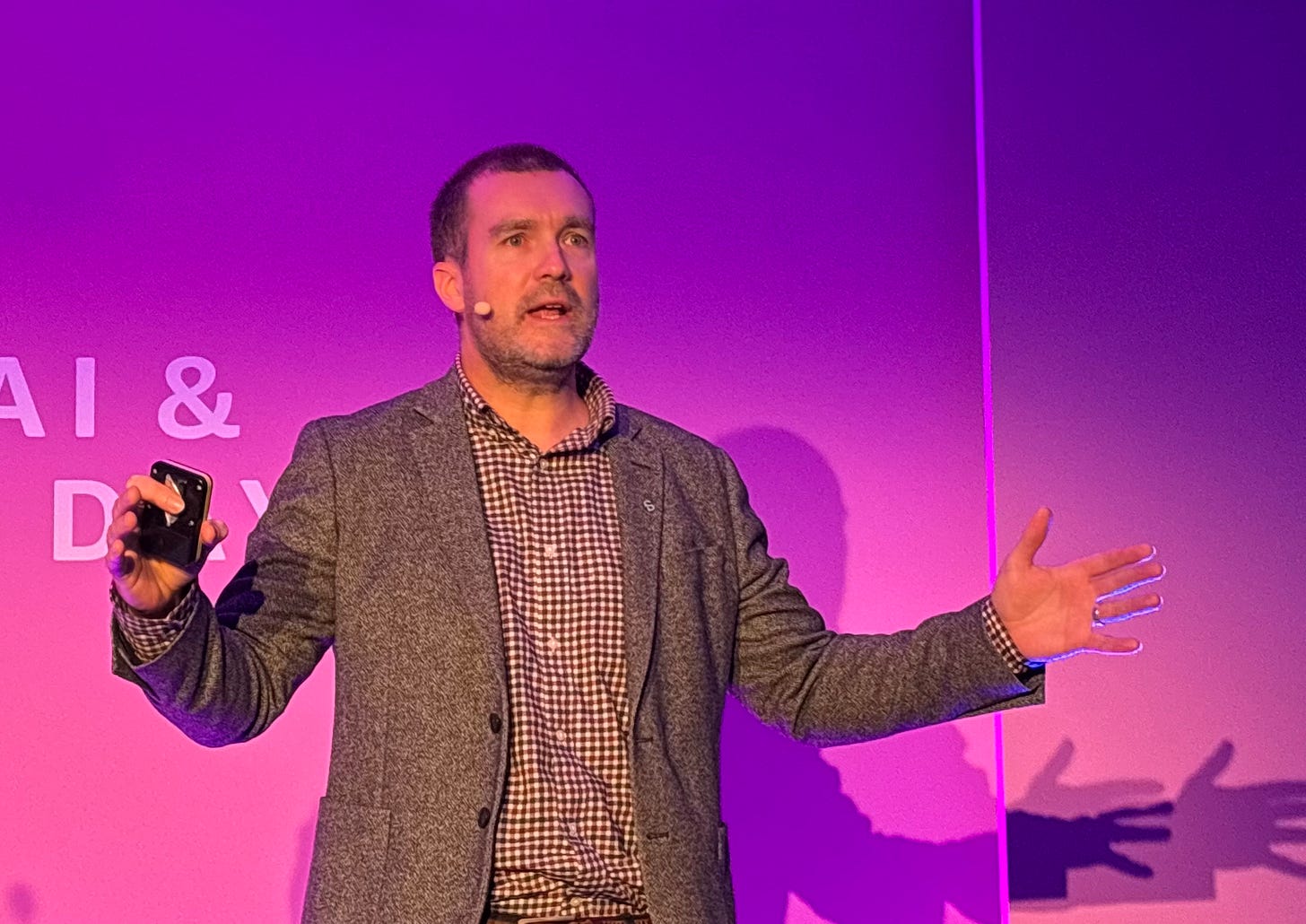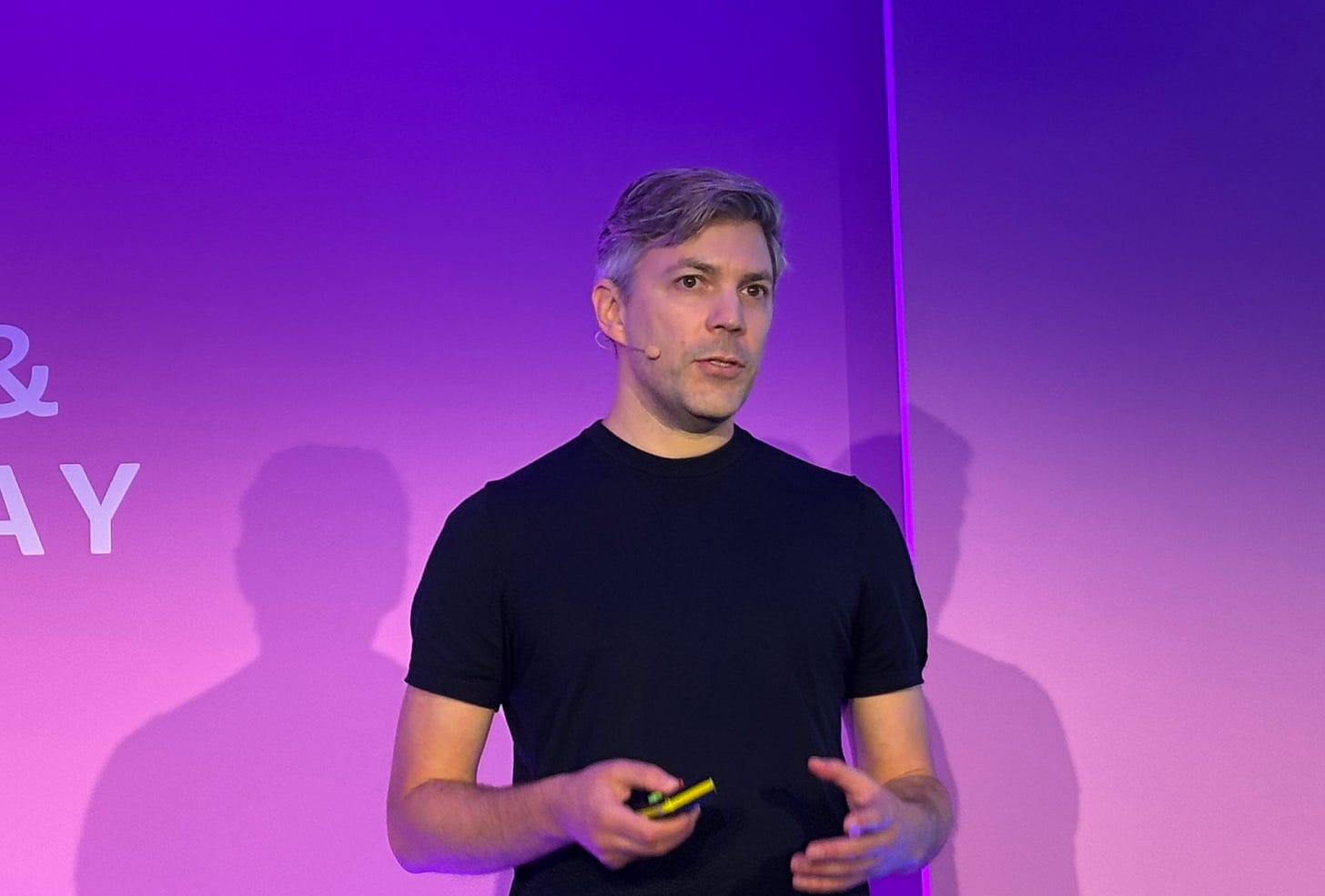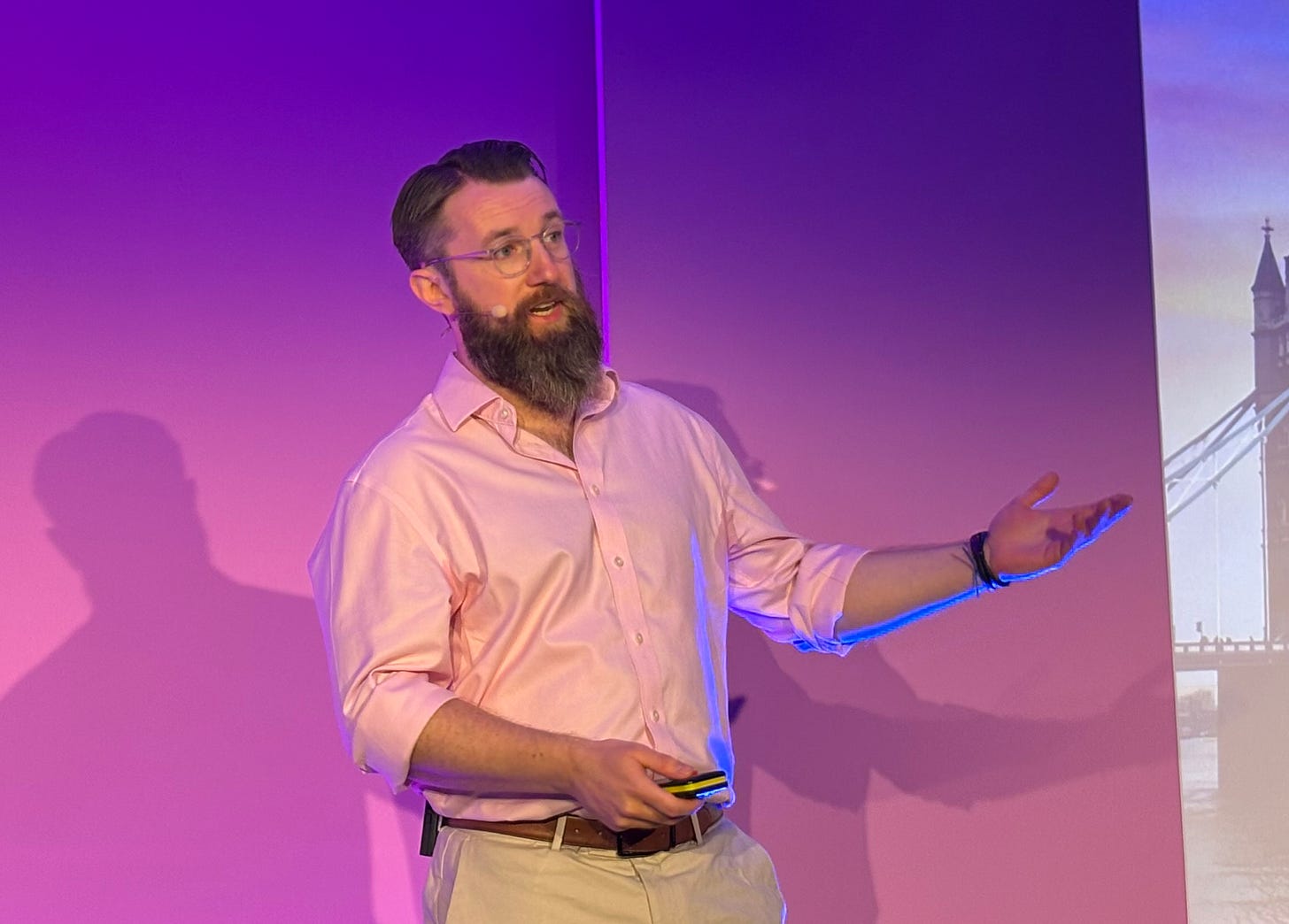AWS Drives UK Push to Industrialize Generative AI for Every Sector
Through £8 billion of data infrastructure and new AI platforms, the company aims to make intelligence a standard business function
Artificial intelligence has entered its execution phase. No longer confined to labs or pilot programs, it is now the backbone of a new industrial transformation. At the center of this movement stands Amazon Web Services (AWS), reshaping how businesses embed intelligence into their products, services, and operations. From financial modeling to logistics, marketing, and healthcare, AWS is giving enterprises the infrastructure and tools to operationalize AI at scale—not as an experiment, but as a core business engine.
That ambition defined the tone at AWS GenAI and Data Day 2025 in London, where the cloud leader introduced its next generation of technologies—Agent Core, QuickSuite, and expanded Bedrock capabilities—designed to help organizations deploy agentic AI safely and efficiently. The message was clear: the era of prototypes has passed; the age of production has begun.
“This year, it’s all about scaling and delivering real business value,” said Alison Kay, Vice President and Managing Director of AWS UK & Ireland. “We’re seeing how agents and agentic AI are helping our customers transform ideas into tangible business results, delivering measurable value with the speed and innovation you would expect from Amazon.”
Kay described this moment as “breathtaking,” reflecting the pace at which generative AI is being adopted across the UK.
“Today, as we stand at the threshold of this new era—an age where AI, GenAI, and agentic AI are reshaping the UK and Ireland’s economy, driving innovation, and transforming lives—the opportunities have never been greater.”
AWS’s answer is an end-to-end ecosystem that eliminates technical friction. Bedrock simplifies the use of foundation models, QuickSuite links data analytics with natural-language search, Kiro accelerates agentic software development, and Agent Core orchestrates autonomous systems capable of reasoning and memory. Each layer is designed to let customers focus on outcomes rather than infrastructure.
Shaown Nandi, AWS Director of Technology, compared the rapid convergence of data, compute, and transformer models to a “super-wave.”
“Now is the time to start mobilizing your teams, thinking big, and making that leap,” he urged. His surfing analogy resonated: companies that ride the wave, not hide beneath it, will define the next decade of digital growth.
Building the Foundations for a National AI Economy
Behind AWS’s technological ambitions lies a long-term commitment to Britain’s digital infrastructure. In September 2024, AWS announced plans to invest £8 billion between 2024 and 2028 to build, operate, and maintain its UK data centres—a programme expected to contribute £14 billion to national GDP and support around 14,000 full-time jobs each year across construction, engineering, telecommunications, and related sectors.
The announcement extends AWS’s ongoing build-out since its first UK Region launched in 2016 and brings total planned investment for 2020-2028 to more than £11 billion. The scale reflects AWS’s intent to give British enterprises “more AI compute power closer to your data and to your customers,” as Kay noted. Lower latency, stronger data residency, and improved regulatory assurance are key benefits of this local presence.
The commitment also reinforces a nationwide innovation chain. The new facilities supply high-performance computing to industries from pharmaceuticals to financial services, underpinning projects run by organisations such as AstraZeneca, Cancer Research UK, NatWest Group, and the Natural History Museum—all cited by AWS as examples of domestic customers using its cloud to “lower costs, become more agile, and innovate faster.”
Kay attributed the company’s sustained momentum to its internal Why Culture—a corporate mindset that demands constant reinvention for customers.
“It challenges us to ask: why does this experience have to be this way? Why can’t we improve this process?” she said.
Grounded in Amazon’s leadership principles such as “learn, be curious, and think big,” that culture “helps us operate like a startup with relentless focus on speed, customer outcomes, and investing in our people,” she added.
At the heart of this culture are four pillars:
AI as a creative partner – advancing from automation to augmentation.
People-centred innovation – keeping humans in control of transformation.
Reinvention, not optimisation – using AI to rebuild business models.
Responsible AI – fostering trust through transparent, ethical governance.
“When these four pillars come together,” Kay said, “you can create a culture where AI flourishes while keeping humans at the heart of innovation.”
AWS’s technology portfolio reflects that principle. Bedrock Guardrails ensures outputs align with corporate values; Automated Reasoning mathematically validates model logic to curb hallucinations; and cost-management techniques, such as model distillation and intelligent prompt routing, reduce compute expenses by up to 75%. Together, they make AI both scalable and sustainable—qualities critical for enterprise adoption.
How Enterprises Scale With AWS
The power of AWS’s platform becomes clear in customers' hands, turning generative and agentic AI into everyday value.
(1) Human-Centric Automation at Sage
Jonathan Cowen, Executive Vice President at Sage, has one clear goal: “to revolutionize how HR and payroll work for the people who run it.” The company’s new Copilot platform, built on AWS, automates onboarding, contract generation, and payroll reconciliation with striking precision.
Behind the system lies a human-first design philosophy. “Bridget,” a payroll professional who inspired the project, “wants to feel a sense of control,” Cowen said. “She’s the human in the system that makes everything work.”
Using Amazon Bedrock and structured-data functions, Sage’s developers prototype rapidly while maintaining compliance and auditability. “AI will help elevate human work, not eliminate it.”
The impact extends beyond process automation. Copilot is beginning to analyse payroll trends to predict seasonal workload spikes and suggest resource allocation—an early example of agentic AI as a management tool rather than merely a support function. Sage’s next phase will integrate conversational analytics so finance leaders can ask complex questions in natural language and receive accurate, context-aware responses drawn from company data.
(2) Creative Intelligence at WPP
For global marketing group WPP, AWS infrastructure is fuelling a creative and operational overhaul.
WPP’s Chief Innovation Officer, Peter Gordon, said the firm’s WPP Open platform—an AI-powered marketing operating system—now reaches 70% of employees worldwide. It combines generative models and agentic frameworks to streamline campaign ideation, design, and performance analysis.
Through Agent Builder, employees can encode their expertise into reusable digital agents that assist with audience research, brand monitoring, and campaign generation.
“We’ve seen synthetic audience clusters, PR agents that interpret brand sentiment, and multi-agent orchestration performing end-to-end research,” Gordon said.
So far, staff have created more than 78,000 agents, forming what Gordon calls a “collaborative intelligence model” in which human creativity directs machine reasoning.
“We’re starting to observe agents perform more of our operational tasks, putting us in the higher-level process of executive decision-making,” he added. The result is faster turnarounds, deeper insights, and reduced creative fatigue—proof that AI can enhance rather than dilute originality.
(3) Smarter Money Movement at Wise
Fintech pioneer Wise is equally emblematic of AWS’s reach. Wise’s Director of Analytics and Machine-Learning Platform Lead Mark Harley explained that AWS underpins every stage of the company’s data pipeline—from ingestion and model training to live fraud detection.
In 2025, Wise processed over £145 billion for 15.6 million customers, with 70% of transfers completing in under 20 seconds. Its architecture relies on Amazon SageMaker Studio Lab for experimentation, Amazon EMR for large-scale data processing, and AWS Glue for catalog management. Generative AI is now being applied to document intelligence—automating invoice extraction for business clients and freeing staff for higher-value financial planning.
“AI helps us keep that money moving instantly, conveniently, and safely,” Harley said.
Continuous retraining allows Wise’s detection models to adapt within hours, ensuring fraud prevention evolves as rapidly as the threats themselves. The company’s next target is agentic AI for liquidity forecasting—an intelligent system that can predict real-time cash needs across markets and automatically trigger transfers.
Together, these three organisations illustrate what AWS’s executives call “the move from experiments to engines.” Each shows AI not as a side project but as operational infrastructure—a decisive shift in how enterprise value is created.
Collaborative Intelligence: The Next Stage of AI
Across every sector, one principle now defines AWS’s narrative: collaborative intelligence. Rather than replacing people, the company’s vision embeds AI agents as colleagues that reason, plan, and learn alongside humans.
“AI agents will change how we all work and live,” Kay said. Nandi echoed the sentiment: “You can’t do it yourself. You need the right partner—someone who can help you innovate at the speed and scale this era demands.”
Through its £8 billion UK investment, open development platforms, and human-centred culture, AWS has positioned itself as that partner—enabling British industries to industrialize AI with confidence and purpose. What began as isolated pilots has evolved into national infrastructure, fuelling a new chapter in the UK’s digital economy.







